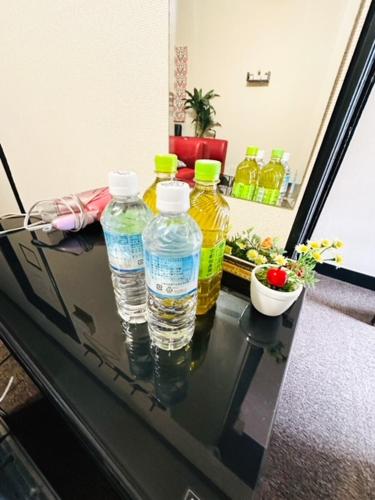Yoshimine-dera Temple
menuMenu
Yoshimine-dera Temple, known for its cherry blossoms and autumn foliage, offers breathtaking views of Kyoto city and Mount Hiei.








Highlights
- 20th temple on the Saigoku Sanjusanso pilgrimage route
- Famous for cherry blossoms
- Famous for autumn leaves
- Panoramic view of Kyoto city
- Panoramic view of Mount Hiei
Basic Information
- Address
- 1 Ohara Ooharano Kojio-cho, Nishikyo-ku, Kyoto-shi, Kyoto-fu Search for tourist attractions in Kyoto
- Access
- Take the JR Kyoto Line (Tokaido Main Line) to Mukomachi Station or the Hankyu Kyoto Line to Higashimukomachi Station, then the Hankyu bus No. 66 bound for Yoshimine-dera to the terminal stop. It's an 8-minute walk from there. From January 6th to the end of February, the Yoshimine-dera bound bus will only go as far as Kojio. Show route
- Op.Hours
- 8:00 AM to 5:00 PM
- Cld.Days
- No days off
- Fee
- Adults: ¥500 High school & junior high school students: ¥300 Elementary school students: ¥200 If you visit Sanbo-ji Temple (adjacent to the north) first and then enter Zenpō-ji Temple, please use the intercom. Prepare the exact admission fee and show it to the security camera before placing it in the designated box. The revolving door will then be unlocked remotely. Please note that you will not be able to receive pamphlets through this entrance method. If you pay the admission fee at the main gate first, exit through the north gate to visit Sanbo-ji Temple, and then re-enter Zenpō-ji Temple through the north gate, you will need to contact us via the intercom to have the revolving door unlocked remotely. Re-entry is possible. In this case, you need to show the pamphlet you received at the Zenpō-ji Temple entrance to the security camera.
- INFO
- The temple grounds are extensive. We recommend wearing comfortable walking shoes.
Overview
Recommended nearby attractions
Tofuku-ji Temple

Be captivated by the stunning autumn foliage and the National Treasure Sanmon gate! Immerse yourself in history and natural beauty at this Zen temple, one of Kyoto's Five Great Zen Temples.
Zuifuin

Zuifuin's highlights are the *karesansui* (dry landscape) gardens, "Dokuzatsu-niwa" and "Kanmin-niwa," designed by Shigemori Mirei. Prepare to be captivated by the serene beauty and create an unforgettable memory.
Myoshin-ji Keishun-in

A tranquil space known for its beautiful garden of maple leaves and moss.
Jojakko-ji Temple

A beautiful temple nestled in a tranquil forest, renowned for its stunning scenery and autumn leaves.
Entoku-in Temple

Entoku-in, renowned for its autumn foliage, is at its most breathtaking during the fall maple season. The vibrant crimson leaves contrast beautifully with the kare-sansui (dry landscape) garden, captivating all who visit.
Kodai-ji Temple

A serene temple built by Nene, Toyotomi Hideyoshi's wife. Features beautiful gardens, tea houses, and seasonal illuminations.
Daitoku-ji Temple

With its sprawling grounds dotted with sub-temples, serene karesansui (dry landscape) gardens, and historically and culturally significant structures, Daitoku-ji is a must-see Zen temple representing the best of Kyoto.
Sanzen-in Temple

A Kyoto icon, this temple offers a tranquil escape, featuring the beautiful moss-covered Yujoen garden and the charming sight of the Warabedizo statues.
Koetsu-ji Temple

Koetsu-ji Temple is a temple associated with Hon'ami Koetsu, a cultural figure of the early Edo period. Its beautiful garden and unique tea rooms are its highlights.
Ryogen-in

Ryogen-in is the oldest sub-temple of Daitoku-ji, offering a tranquil escape where you can immerse yourself in history.
Nearby Hotels
Hotel Kyoto Eminence

Hotel La Siesta Kyoto - Adult Only

Hotel Rakusai

Hotel Alfa Kyoto (Adult Only)

BOND

NEW OPEN/FUNHOUSE KAORI/PRIVATE HOUSE

RENEWAL/FUNHOUSE KATSURAGAWA/PRIVATE HOUSE

SAIZEN Matsumuro stay

Oyama Guest House Kyoto

Yodo Castle Inn

